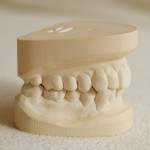
Digital study models first appeared in the 1990s and developments in digital technologies continue apace with a number of different approaches for generating digital study models.
The aim of this review was to assess the accuracy, validity, and reliability of measurements obtained from virtual dental study models compared with those obtained from plaster models.
Methods
Searches were conducted in the Medline, Embase, Cochrane Central Register of Controlled Clinical Trials, Web of Knowledge, Scopus, Google Scholar, and LILACS databases.
Prospective and retrospective original studies with more than 10 patients analysing treated and untreated orthodontic patients with or without malocclusion with measurements made on digital and plaster models were considered. Two reviewers independently selected studies, abstracted data and assessed study quality. Study quality was assessed using the QUADAS-2 tool. A qualitative summary was presented.
Results
- 35 studies were included.
- 31 studies compared digital models with plaster models, 2 studies used CBCT, 1 study analysed digital models obtained by dedicated software, and 1 study used both CBCT and plaster models.
- The overall quality of the studies was considered to be variable but moderate on average.
- A range of parameters were assessed: – analysis of transverse dimensions, other miscellaneous linear measurements, tooth size, Bolton ratio, arch length and crowding and irregularity index, inter-arch occlusal features, and occlusal indexes, the American Board of Orthodontics Objective Grading System.
- No significant differences were observed for most of the studies in all the measured parameters, with the exception of the American Board of Orthodontics Objective Grading System.
Conclusions
The authors concluded
Digital models are as reliable as traditional plaster models, with high accuracy, reliability, and reproducibility. Landmark identification, rather than the measuring device or the software, appears to be the greatest limitation. Furthermore, with their advantages in terms of cost, time, and space required, digital models could be considered the new gold standard in current practice.
Comments
Previous systematic review of this topic (other references) has suggested that digital models have performed well compared with traditional plaster models. However, they both raised concerns regarding the quality of the evidence. This new review of the topic includes nearly twice as many studies as those earlier reviews, which is perhaps not surprising given the pace of digital developments. As digital models over potential advantages over plaster models in relation to cost, time, and space required growth in the use in orthodontic practice is likely to increase.
Links
Primary paper
Rossini G, Parrini S, Castroflorio T, Deregibus A, Debernardi CL. Diagnostic accuracy and measurement sensitivity of digital models for orthodontic purposes: A systematic review. Am J Orthod Dentofacial Orthop. 2016 Feb;149(2):161-70. doi: 10.1016/j.ajodo.2015.06.029. Review. PubMed PMID: 26827972.
Other references
Dental Elf – 2nd Mar 2015 – Digital dental models compare favourably with plaster models
Fleming PS, Marinho V, Johal A. Orthodontic measurements on digital study models compared with plaster models: a systematic review. Orthod Craniofac Res. 2011 Feb;14(1):1-16. doi: 10.1111/j.1601-6343.2010.01503.x. Epub 2010 Nov 22. Review. PubMed PMID: 21205164.

Digital study models as reliable as traditional plaster models? https://t.co/SN7uzDRl6x
Digital study models as reliable as plaster models finds review https://t.co/SN7uzDRl6x
Digital study models as reliable as plaster models? https://t.co/SN7uzDRl6x
Review finds digital study models as reliable as plaster models? https://t.co/SN7uzDRl6x
Don’t miss- Digital study models as reliable as traditional plaster models? https://t.co/SN7uzDRl6x
RT @TheDentalElf: Review finds digital study models as reliable as plaster models? https://t.co/3BER2LSfAN #diggywithit